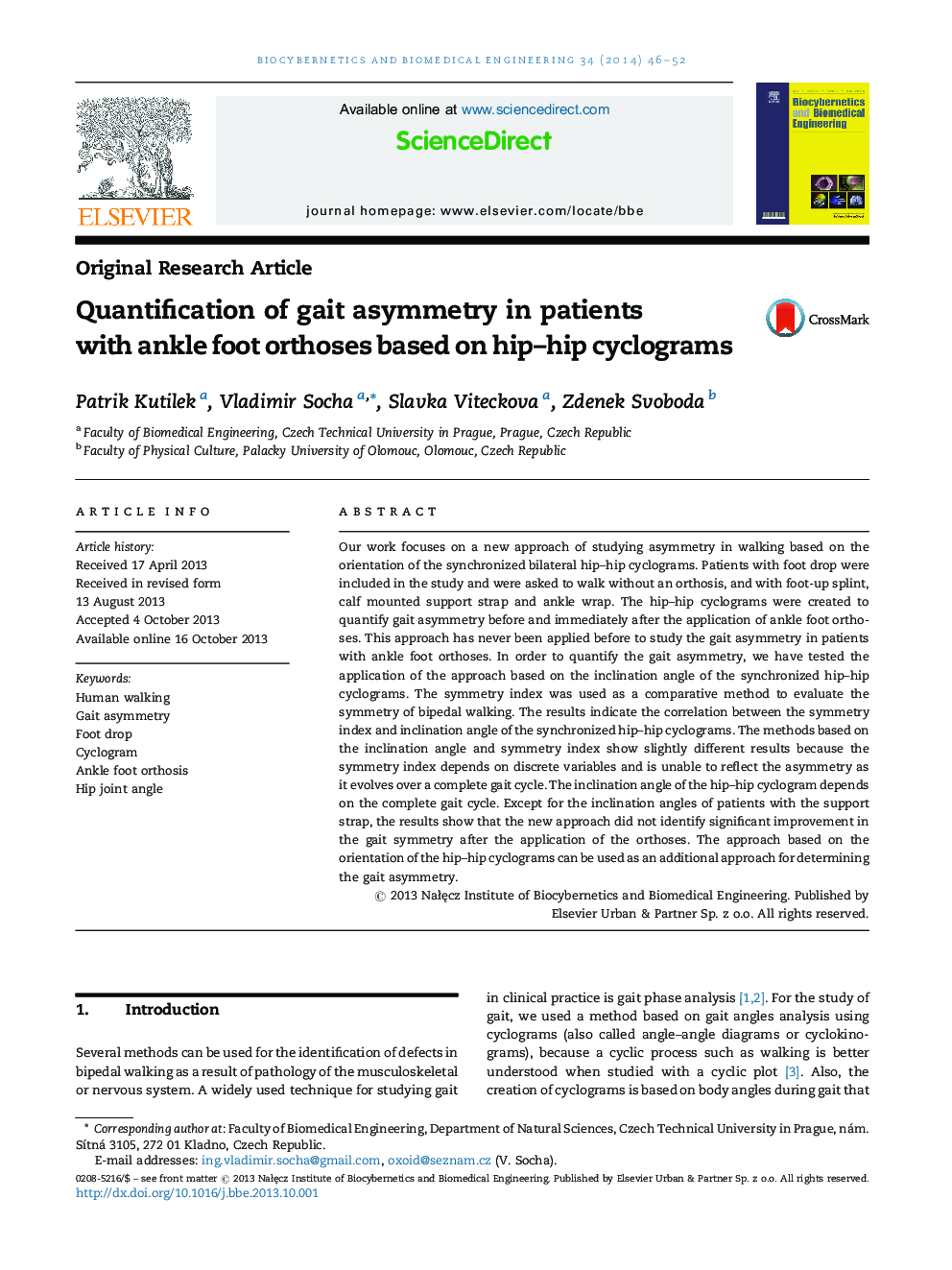| Article ID | Journal | Published Year | Pages | File Type |
|---|---|---|---|---|
| 5235 | Biocybernetics and Biomedical Engineering | 2014 | 7 Pages |
Our work focuses on a new approach of studying asymmetry in walking based on the orientation of the synchronized bilateral hip–hip cyclograms. Patients with foot drop were included in the study and were asked to walk without an orthosis, and with foot-up splint, calf mounted support strap and ankle wrap. The hip–hip cyclograms were created to quantify gait asymmetry before and immediately after the application of ankle foot orthoses. This approach has never been applied before to study the gait asymmetry in patients with ankle foot orthoses. In order to quantify the gait asymmetry, we have tested the application of the approach based on the inclination angle of the synchronized hip–hip cyclograms. The symmetry index was used as a comparative method to evaluate the symmetry of bipedal walking. The results indicate the correlation between the symmetry index and inclination angle of the synchronized hip–hip cyclograms. The methods based on the inclination angle and symmetry index show slightly different results because the symmetry index depends on discrete variables and is unable to reflect the asymmetry as it evolves over a complete gait cycle. The inclination angle of the hip–hip cyclogram depends on the complete gait cycle. Except for the inclination angles of patients with the support strap, the results show that the new approach did not identify significant improvement in the gait symmetry after the application of the orthoses. The approach based on the orientation of the hip–hip cyclograms can be used as an additional approach for determining the gait asymmetry.
